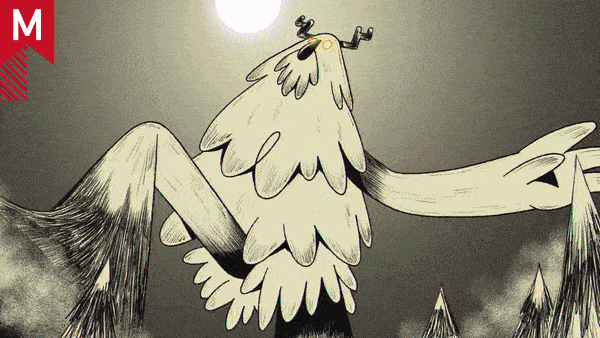I was 14 years old when I watched Lord of the Rings for the first time.
This whole new, completely fantastical world set in Middle Earth blew my mind and stayed with me for a long time- the colours, the style, the way the story with elves, dwarfs, and hobbits seemed real- all of it.
I wasn’t even sure what this type of film was called at the time, but I remember thinking, this is something I want to do one day.

In my late teens (and to my great joy), I discovered that motion graphics and animation were actually career paths I could pursue.
I say great joy because Motion Design was definitely not a mainstream subject of study at most schools, and very few people treated it like it was anything more than a hobby.
By this time, I was obsessed with the way Peter Jackson and his team used CGI to generate special effects. So I enrolled into a VFX and animation course with the ultimate goal of becoming a VFX supervisor in the film industry.
Like many others, I believed that making it to the movies meant that I had made it. Gradually, as I worked with some of the leading global VFX studios, I realised that as an individual, I wanted to go beyond just the technical and harness my own creativity. I wanted to channel my inner Percy Jackson and create new worlds from scratch, new scenes, and environments.
I’ve always been curious about fusing new tools and technology in creative ways, and with the boom of digital content, I began to foresee the incredible potential of tech and innovation to create compelling stories. That’s when I decided to pivot to Motion Design.
It was one of the best decisions I’ve ever made.
Motion Design involves creating static graphics and moving them in time and space to tell a story. From the Hollywood movies of the late ‘50s to the current reels on Instagram, creatives have used this medium to tell stories for decades.
Unlike other forms of animation, it primarily uses graphics and types to create a unique (and in my opinion, underrated) style of visual communication. When I decided to move to Motion Design, I was incredibly excited to work at the intersection of cutting-edge technology and creativity and explore the advertising space. I was really inspired by Suresh Eriyat and Vaibhav Kumaresh, and their use of animation in advertising.
I have also always been an admirer of BUCK Studios. Their work with the tech companies of Silicon Valley intrigued me.
Ten years in and motion graphics continue to fascinate me. And now more than ever, I believe that it is one of the most powerful tools for creative storytelling.
Apart from movies, TV shows, immersive ads (like the Microsoft 365 commercial), and title sequences (like Game of Thrones’ iconic opening credits that introduced us to the imaginary new world of King’s Landing via a map of the realm), Motion graphics as a medium is so versatile that it can be harnessed across many industries.
From Education and Gaming to Healthcare, Corporate Communications, and Fitness, motion graphics can be used to create engaging visuals that capture viewers’ attention and convey messages swiftly and effectively.

The future of digital storytelling lies within the nuances of motion graphics, which can be harnessed to narrate a story in incredible ways.
As AR-VR and Metaverse technologies continue to grow and become more widely adopted, the future of Motion Design in these new media technologies is likely to be very exciting. It can help us create more engaging and believable environments for the user to explore. In the next few years, Motion Design in AR-VR and Metaverse technologies is likely to be highly innovative and transformative, offering new opportunities to create engaging and effective content that connects with audiences in new and exciting ways.
Globally, many leading studios are using Motion Design and investing in new tools and tech to hone the craft. In India too, there is a huge, untapped potential to use this art form to visually enhance everything from branding and advertising to movies and content creation.
Unfortunately, while the demand continues to soar, the resources remain underutilised. Despite its growing popularity, motion graphics education is still relatively new in India. Many schools and universities do not offer formal courses in motion graphics, and those that do often have curriculums that do not reflect the latest industry trends and technologies.
In fact, a vast majority of our designers are self-taught. While it’s amazing to see people push their creative boundaries and learn this skill online, what the industry needs is formal education and awareness of it as a credible career path.
By providing students with the skills and knowledge they need to succeed in this field, we can help bridge the gap between the demand and the supply of qualified creative candidates. This will not only benefit our industry but also others that rely on motion graphics for their visual communication needs.
We can and should create the next generation of Peter Jacksons, Buck Studios, and Tendrils in India.
Motion graphics possesses a remarkable blend of creative expression and freshness that can propel a story further by connecting with viewers’ emotions.
With its vibrant colours, styles and limitless creative potential, they can bring any story or character to life.
This is the future of storytelling in India. It’s time we invest in it.
About the Author

Aditya Tawde is the Co-founder and Chief Creative Officer at Post Office Studios, the new media lab at Kulfi Collective that focuses on producing design-driven, immersive content & virtual experiences for brands and platforms at scale.




